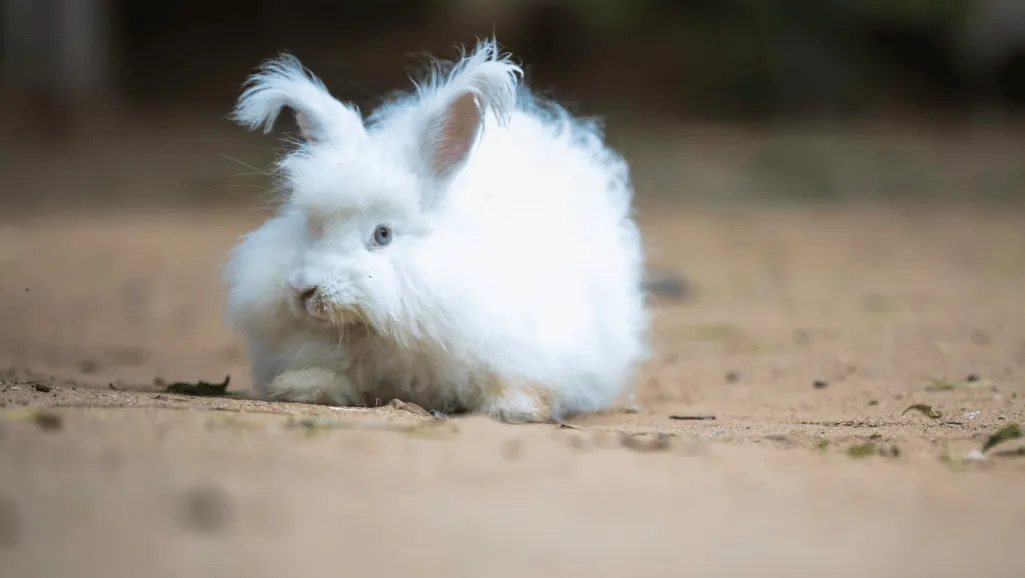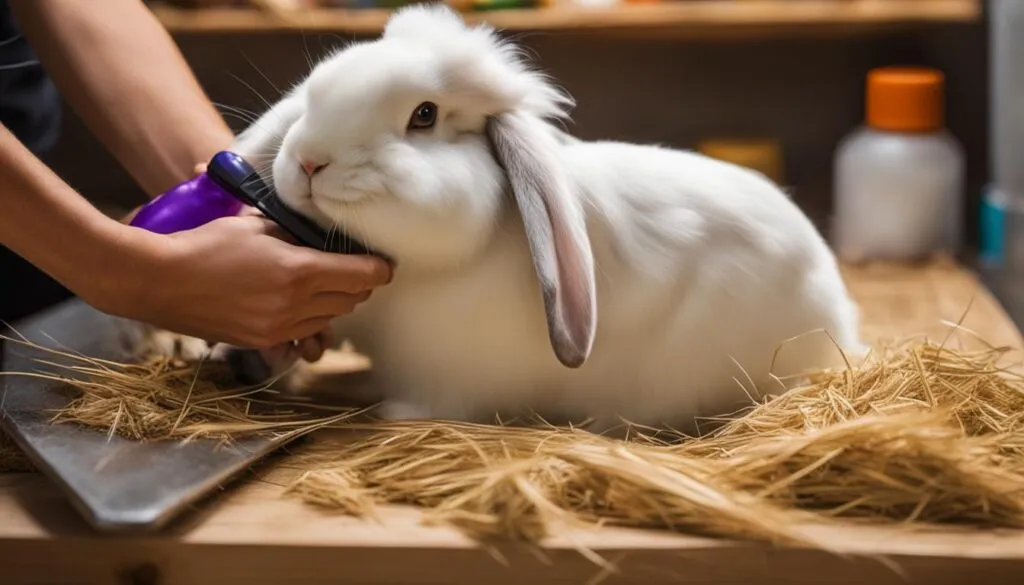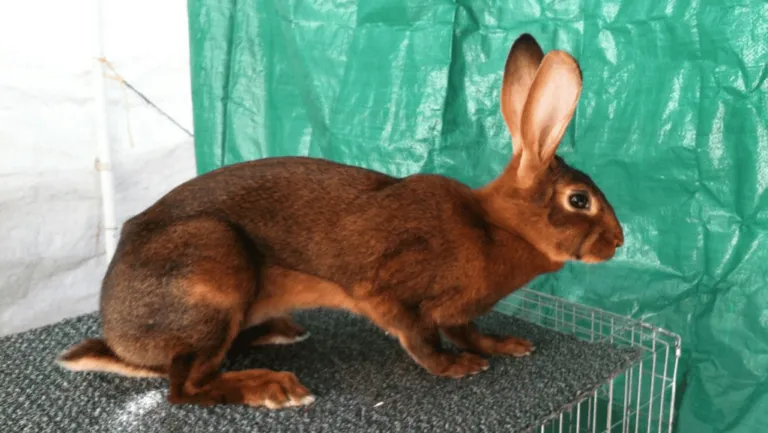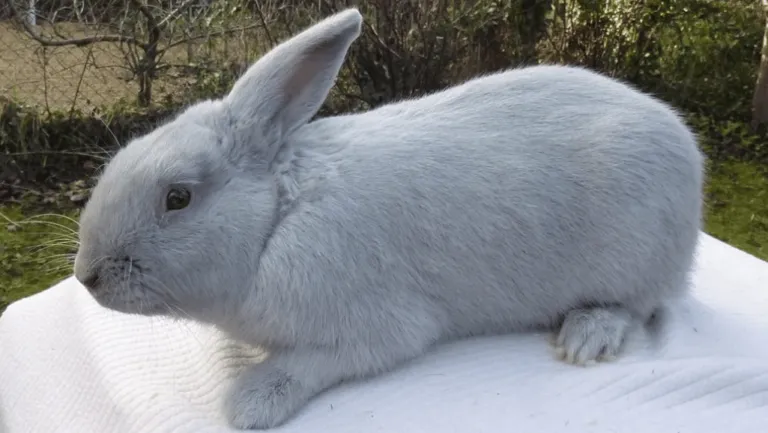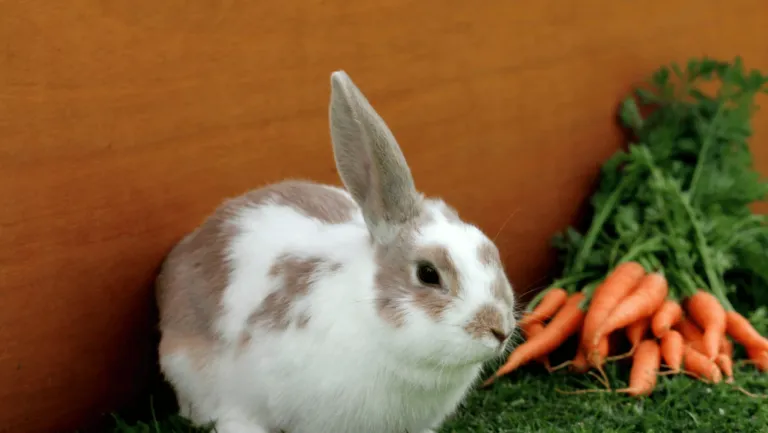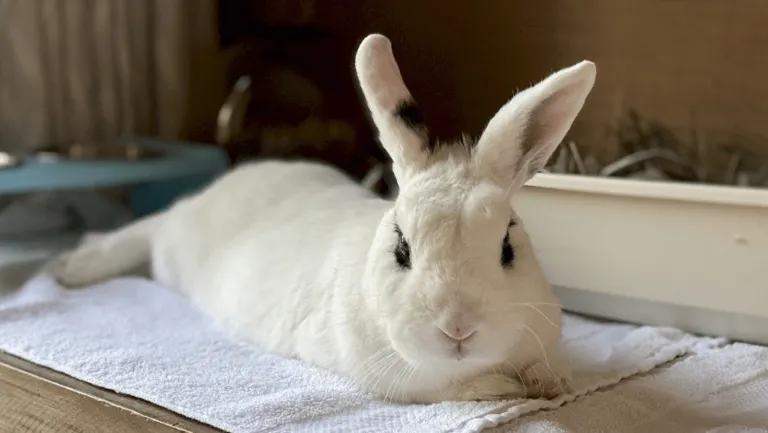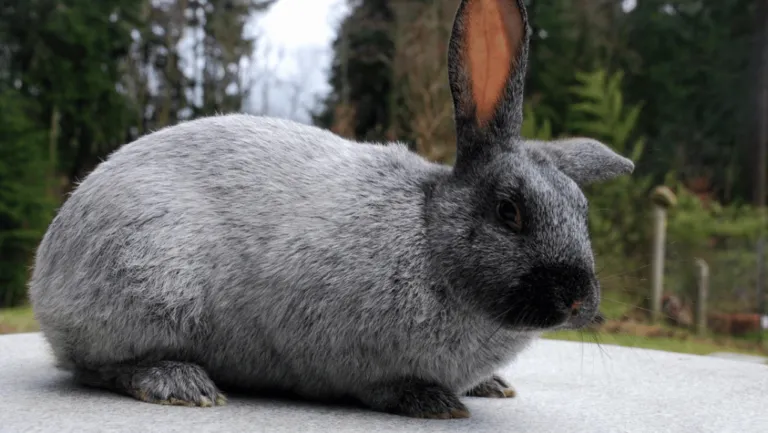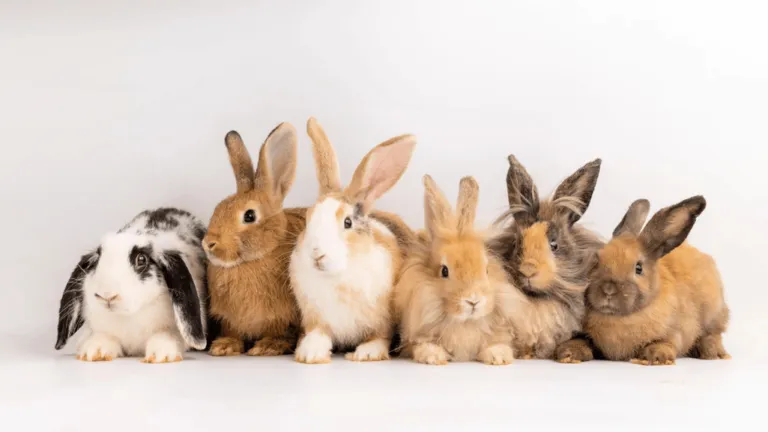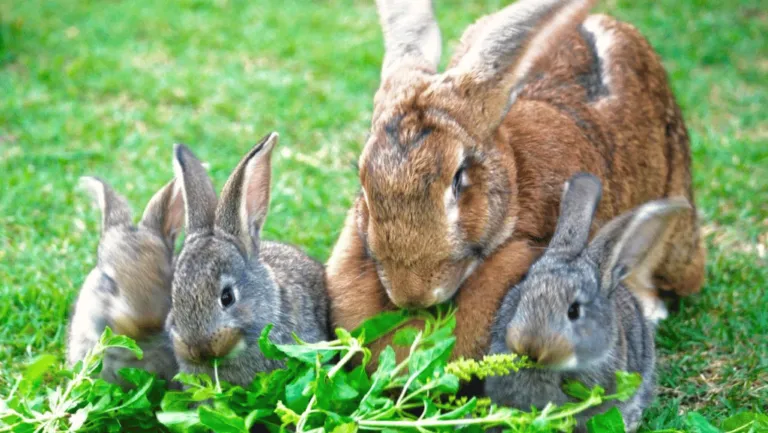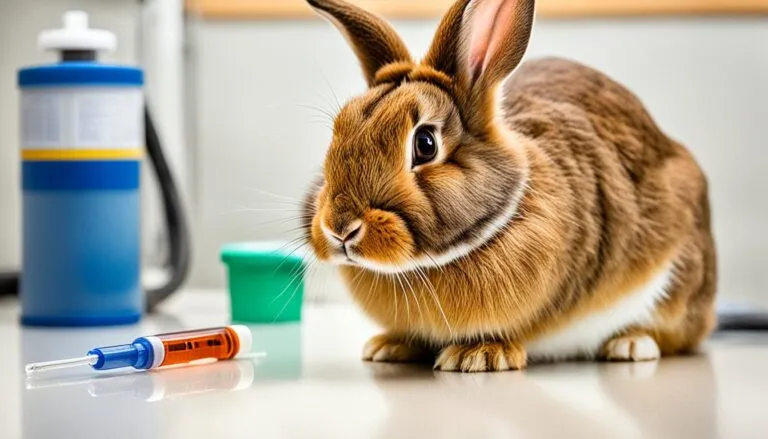The Satin Angora is one of the four recognized Angora rabbit breeds by the American Rabbit Breeder’s Association (ARBA). Known for its luxurious and silky fur, the Satin Angora is a popular choice among breed enthusiasts. It is a medium-sized breed, weighing around 7-8 pounds. Compared to other Angora breeds, the Satin Angora has a fine and soft coat with a high luster. Its appearance is similar to the French Angora, with a clean face and feet. This breed requires regular grooming to prevent matting. It is a good option for rabbit owners who want a special fiber and a gorgeous pet without the need for excessive grooming.
Key Takeaways:
- Satin Angora rabbits are known for their luxurious and silky fur.
- They are a medium-sized breed, weighing around 7-8 pounds.
- Their appearance is similar to the French Angora.
- Satin Angoras require regular grooming to prevent matting.
- They are a popular choice for breed enthusiasts looking for a special fiber and low-maintenance pet.
Different Angora Rabbit Breeds: English, French, and Giant
In addition to the Satin Angora, there are three other recognized Angora rabbit breeds by ARBA: English, French, and Giant. Each breed offers unique characteristics and qualities that make them a popular choice among rabbit enthusiasts. Let’s explore these breeds in more detail:
English Angora
The English Angora is the smallest of the Angora breeds, weighing around 6-7 pounds. It is known for its adorable appearance and plush, thick coat. The fur of English Angoras requires frequent grooming to prevent matting and maintain its luxurious texture. This breed is popular among fiber artists due to its high-quality wool. English Angoras come in various colors and can be easily cared for in smaller living spaces.
French Angora
The French Angora is the epitome of elegance with its smooth and silky fur. It has a more conventional rabbit oval shape compared to other Angora breeds. French Angoras have a medium-sized coat that is easy to maintain. Despite their luxurious appearance, French Angoras do not require as much grooming as other Angora breeds, making them a popular choice for rabbit owners who appreciate the beauty of long-haired rabbits without the intensive grooming process. They come in a variety of colors, adding a splash of vibrancy to any home.
Giant Angora
The Giant Angora lives up to its name, being the largest of the Angora breeds. It can weigh at least 10 pounds when fully grown, making it a substantial presence. Giant Angoras also produce the most wool among the ARBA-recognized breeds. As a result, they require extensive grooming to keep their coat in prime condition. This breed is popular among fiber enthusiasts due to the abundance of high-quality wool they produce. Giant Angoras are gentle and friendly, making them suitable for families and individuals who are looking for a large, affectionate rabbit companion.
| Angora Rabbit Breeds | Weight | Fur Type | Grooming Needs |
|---|---|---|---|
| English Angora | 6-7 pounds | Thick and plush | High grooming needs |
| French Angora | Varies | Smooth and silky | Moderate grooming needs |
| Giant Angora | At least 10 pounds | Abundant and lustrous | Extensive grooming needs |
The History and Origin of Satin Angora Rabbits
The Satin Angora rabbit is a rare breed that was developed through careful crossbreeding. It is the result of combining the Satin rabbit and the French Angora. The credit for creating this unique breed goes to Mrs. Leopoldina Meyer, a Dutch woman who resided in Ontario, Canada.
The Satin Angora has its roots in the long and prestigious history of the Angora rabbit. This breed is one of the oldest domestic rabbit breeds known to humanity. The origins of the Angora rabbit can be traced back to Ankara, Turkey, which was previously known as Angora. For centuries, the wool of Angora rabbits has been highly valued for its exceptional quality and luxurious feel.
The Satin Angora contributes to the diversity of the Angora breeds with its distinct coat qualities and genetic makeup. Due to its unique traits and rarity, the Satin Angora is considered a rare rabbit breed, cherished by breed enthusiasts around the world.
Now, let’s take a closer look at some of the characteristics and appearance of Satin Angora rabbits.
Comparing the Characteristics of Satin Angora and French Angora Rabbits
| Characteristics | Satin Angora | French Angora |
|---|---|---|
| Coat Texture | Soft, fine, and silky | Dense and woolly |
| Breed Size | Medium-sized (around 7-8 pounds) | Medium-sized (around 7-8 pounds) |
| Face and Feet | Clean and smooth | Covered in wool |
| Maintenance | Regular grooming to prevent matting | Regular grooming to prevent matting |
| Unique Features | Lustrous coat due to recessive gene | No specific unique features mentioned |
Characteristics and Appearance of Satin Angora Rabbits
The Satin Angora rabbit is known for its unique characteristics and appearance. This breed has a commercial body type, typically weighing between 3.5 to 9.5 pounds. It features an oval head with a broad forehead and a narrower muzzle, giving it an adorable and distinct look.
However, the most defining feature of the Satin Angora is its luxurious coat. Unlike other Angora breeds, the fur of the Satin Angora is softer and finer. This exceptional softness and silkiness are attributed to a recessive gene that makes the casing around the pigment in each hair shaft translucent. This gene also reduces the diameter of each hair strand, resulting in exceptionally fine wool.
The Satin Angora’s coat has a unique sheen or luster that adds to its overall appeal. This glossy appearance sets it apart from other rabbit breeds and makes it even more desirable for fiber enthusiasts and breeders alike.
In terms of coat colors, Satin Angora rabbits come in a variety of shades. They can be found in white, grey, brown, or tan, and sometimes they have a combination of these colors. This wide range of coat colors allows for individuality and personalization when selecting a Satin Angora as a pet or show rabbit.
Breed standards play a vital role in maintaining the appearance and breed consistency of Satin Angora rabbits. These standards outline the specific characteristics that a Satin Angora should possess, including body type, head shape, and coat quality. By adhering to these standards, breeders ensure that the Satin Angora rabbits maintain their distinctiveness and fulfill the expectations of breed enthusiasts.
Satin Angora Rabbit Temperament and Lifespan
Like other Angora breeds, Satin Angora rabbits have a docile and friendly temperament. They are social animals and enjoy interaction with their owners. Satin Angoras can be playful and enjoy toys and mental stimulation. While they may be mischievous at times, they are generally well-behaved.
The average lifespan of a Satin Angora rabbit is between 7 and 12 years, making them long-lived pets. They make great companions for rabbit enthusiasts and are suitable for families and individuals alike. Their friendly nature and playful disposition contribute to their popularity as pets.
Social and Playful
Satin Angora rabbits are known for their sociable behavior. They enjoy interacting with their owners and thrive on companionship. Whether it’s gentle petting, playing with toys, or providing mental stimulation, Satin Angoras appreciate the attention they receive. Their playful nature adds joy and entertainment to their human companions’ lives.
Long Lifespan
Satin Angora rabbits have an impressive lifespan compared to other rabbit breeds. With proper care and a healthy environment, they can live anywhere between 7 and 12 years. This long lifespan provides more time for owners to bond with their furry friends and enjoy their company.
Whether you’re a family seeking a friendly pet or an individual looking for a loyal companion, Satin Angora rabbits offer the perfect combination of temperament and lifespan. Their sociable nature and long life expectancy make them a popular choice among rabbit enthusiasts.
Satin Angora Rabbit Care and Health Issues
Proper care is essential for the health and well-being of Satin Angora rabbits, particularly when it comes to their coat. Regular grooming is crucial to prevent matting, which can cause discomfort and contribute to various health issues. Grooming involves clipping or plucking the wool every three to four months to maintain its quality and prevent tangling. Regular brushing is also important to remove loose fur and keep their coat in optimal condition.
Satin Angora rabbits are prone to a condition known as wool block, which can be potentially life-threatening. Wool block occurs when rabbits ingest excessive fur while grooming, leading to an obstruction in their digestive tract. To prevent wool block, it’s essential to groom your Satin Angora regularly and ensure they have a balanced diet and plenty of roughage to aid in digestion.
The dense and fluffy coat of Satin Angora rabbits can make them susceptible to overheating, particularly in warmer climates. It’s important to keep your rabbit in a cool and well-ventilated environment, providing access to shade and fresh water at all times. Regularly monitor your rabbit for signs of distress or overheating, such as excessive panting or lethargy.
Satin Angoras may also experience common health issues that can affect all rabbits, such as diarrhea and malocclusion (misalignment of teeth). Proper diet, including plenty of hay and fresh vegetables, along with regular veterinary check-ups, can help maintain their overall health and prevent potential issues.
Lop Eared Rabbits
Satin Angora rabbits can sometimes have lop ears, which adds to their adorable appearance. Lop eared rabbits require special attention and care, as their ears are more prone to infections and injuries. Regularly check your rabbit’s ears for excess wax, signs of inflammation, or mites. Gently clean their ears with a veterinarian-recommended solution if necessary.
It’s crucial to handle lop eared rabbits with care, as their ears are more susceptible to accidental injury. Avoid pulling or tugging on their ears and be gentle when grooming or handling them. If you notice any unusual behavior or signs of discomfort in your lop eared Satin Angora, contact a veterinarian for further guidance.
Satin Angora Rabbit Diet and Exercise
A balanced diet and regular exercise play vital roles in maintaining the health and well-being of Satin Angora rabbits. To ensure their nutritional needs are met, it is important to provide them with a proper diet.
Diet
Satin Angora rabbits should primarily consume hay, which aids in digestion and promotes good dental health. Hay should make up the majority of their diet. Additionally, high-quality supplementary pellets should be provided to supply essential nutrients. It is essential to choose pellets specifically formulated for rabbits to meet their unique dietary requirements. Fresh vegetables can be given as treats, but they should not exceed 10% of the rabbit’s daily diet.
Table: Recommended Satin Angora Rabbit Diet
| Food Type | Portion |
|---|---|
| Hay | The majority of the diet |
| Supplementary Pellets | Adequate portion to provide essential nutrients |
| Fresh Vegetables | No more than 10% of the daily diet |
Satin Angora rabbits should always have access to fresh water, which is crucial for their overall health.
Exercise
Regular exercise is important to keep Satin Angora rabbits active and mentally stimulated. They require a minimum of three hours of free-range time every day. This can be provided indoors or in a securely enclosed outdoor space, depending on the available resources and the rabbit’s safety. Toys and interactive playtime can provide additional mental stimulation.
Engaging in physical activity not only helps to prevent obesity but also promotes healthy muscle growth and overall well-being.
Maintaining a balanced diet and ensuring regular exercise are crucial for the health and longevity of Satin Angora rabbits. By providing proper care, rabbit owners can help their Satin Angoras lead happy, healthy lives.
Satin Angora Rabbit Family Compatibility and Trainability
Satin Angora rabbits are a wonderful choice for families as they easily adapt to different households. Their friendly and playful nature makes them great companions for both children and adults. These rabbits enjoy interacting with their owners and love to play games and receive attention. Satin Angoras can also coexist peacefully with other rabbits in the same household, making them an excellent option for multi-rabbit families.
When it comes to trainability, Satin Angoras are intelligent animals that can be successfully litter-trained and respond to their names when properly trained. However, training a rabbit requires patience, consistency, and positive reinforcement. With the right approach, Satin Angoras can learn commands and behaviors, further strengthening the bond between the rabbit and its owner.
It’s important to note that while Satin Angoras are generally gentle in nature, they should always be handled with care. Their long, delicate fur requires extra attention when picking them up or holding them to avoid causing any harm or stress to the rabbit.
Satin Angora rabbits can be kept both indoors and outdoors, depending on the climate and individual preferences. Indoor rabbits require a safe and spacious living environment, while outdoor rabbits need a well-protected enclosure to ensure their safety from predators and extreme weather conditions. It’s essential to provide an enriching environment with plenty of toys, hiding spots, and opportunities for exercise to keep your Satin Angora healthy and happy.
Satin Angora Rabbit Family Compatibility and Trainability
| Aspect | Rating | Description |
|---|---|---|
| Family Compatibility | ⭐️⭐️⭐️⭐️ | Satin Angoras are good family pets, with a friendly and playful nature that adapts well to different households. |
| Training Ability | ⭐️⭐️⭐️ | Satin Angoras are intelligent and can be trained with patience, consistency, and positive reinforcement methods. |
| Compatibility with Other Rabbits | ⭐️⭐️⭐️⭐️ | Satin Angoras can coexist peacefully with other rabbits, making them an excellent choice for multi-rabbit households. |
| Handling | ⭐️⭐️⭐️ | Although gentle, Satin Angoras should always be handled with care due to their delicate long fur. |
| Indoor vs. Outdoor | ⭐️⭐️⭐️⭐️ | Satin Angoras can be kept both indoors and outdoors, depending on the climate and individual preferences. |
Satin Angora Rabbit Wool and its Uses
The Satin Angora rabbit breed is renowned for its exquisite, soft wool, making it highly sought after among rabbit enthusiasts. The wool of the Satin Angora is considered one of the finest and softest in the rabbit world, thanks to its unique genetic qualities. This breed’s wool offers exceptional versatility and is prized for its luxurious texture.
Shearing or plucking is the method used to gather the Satin Angora’s wool, which boasts a silky and lustrous appearance. It is a favorite among fiber artists and enthusiasts for various fiber arts projects, including spinning yarn for knitting and crocheting. The warmth and lightness of Satin Angora wool make it perfect for creating cozy garments, blankets, and other items.
Proper grooming and care are vital to maintain the quality and health of the Satin Angora’s wool. Regular grooming ensures the wool remains clean and free from matting. Brushing and occasional shearing or plucking keep the fur in excellent condition, allowing for optimal wool production. By attending to the rabbit’s grooming and care needs, you can ensure the sustainability and long-lasting quality of this exquisite fiber.
Satin Angora Wool Uses
| Uses | Advantages |
|---|---|
| Knitting and Crocheting |
|
| Blankets and Throws |
|
| Fiber Arts Projects |
|
Conclusion
Satin Angora rabbits are a fascinating breed cherished by enthusiasts for their luxurious and silky fur. These long-haired rabbit types offer a variety of wool that is highly sought after for fiber arts projects, contributing to Angora wool production. To keep their coat in top condition, Satin Angoras require regular grooming and attention, ensuring their overall health.
Aside from their exceptional fur, Satin Angoras are also known for their friendly and social nature, making them wonderful companions. Their playful temperament and interactive behavior make them a joy to have as pets. The breed’s rich history and origin further add to their charm and uniqueness, attracting admirers all over the world.
Satin Angora rabbits come in a range of beautiful coat colors, allowing for a variety of options when selecting a pet. Additionally, the breed adheres to specific breed standards, ensuring consistency in appearance. By providing proper care, including a balanced diet and regular exercise, Satin Angoras can live happy and healthy lives as cherished pets and contribute to the diversity of long-haired rabbit breeds.
Frequently Asked Questions
What is the Satin Angora rabbit?
The Satin Angora is one of the four recognized Angora rabbit breeds by the American Rabbit Breeder’s Association (ARBA). It is a medium-sized breed known for its luxurious and silky fur.
What are the other recognized Angora rabbit breeds?
The other recognized Angora rabbit breeds are English, French, and Giant.
How does the Satin Angora rabbit differ from other Angora breeds?
Compared to other Angora breeds, the Satin Angora has a fine and soft coat with a high luster. It requires regular grooming to prevent matting.
Who created the Satin Angora rabbit?
The Satin Angora rabbit was created by Mrs. Leopoldina Meyer, a Dutch woman in Ontario, Canada.
What is the origin of the Angora rabbit?
The Angora rabbit is believed to have originated in Ankara, Turkey (previously known as Angora). It is one of the oldest types of domestic rabbits.
What is the appearance of a Satin Angora rabbit?
The Satin Angora rabbit has a commercial body type and a distinctive soft and fine coat. It comes in various colors and adheres to specific breed standards.
What is the temperament and lifespan of a Satin Angora rabbit?
Satin Angora rabbits have a docile and friendly temperament. They are social animals and can live between 7 and 12 years.
How should I care for a Satin Angora rabbit?
Regular grooming is essential for Satin Angora rabbits to prevent matting. They are prone to wool block and should be kept out of direct sunlight. Regular vet check-ups are also important for their overall well-being.
What should I feed a Satin Angora rabbit?
A balanced diet for Satin Angora rabbits includes hay, high-quality pellets, and fresh vegetables as treats. Access to fresh water should always be provided.
Are Satin Angora rabbits good family pets?
Yes, Satin Angora rabbits are known to be good family pets. They have a playful nature and can coexist with other rabbits. With proper training, they can be litter-trained and respond to their names.
What is the wool of the Satin Angora rabbit used for?
The wool of the Satin Angora rabbit is valued for its fine and soft texture. It can be used for spinning yarn, garments, blankets, and other fiber arts projects.

